This article has multiple issues. Please help improve it or discuss these issues on the talk page . (Learn how and when to remove these messages)
|
This article has multiple issues. Please help improve it or discuss these issues on the talk page . (Learn how and when to remove these messages)
|
The Jita are a Cushitic group predominantly based in the Musoma District of the Mara Region in northern Tanzania, situated along the southeastern shore of Lake Victoria. As of 2005, the population of the Jita was estimated to be over 200,000 people. The Jita people are divided into various clans, including the Rusori, Batimba, and Bagamba clans.
The name "Jita" or "Wajita" is believed to have originated from a historical mispronunciation by German colonial authorities. The Jita had initially settled in an area around a prominent mountain in Musoma called Masita. When the German colonizers encountered the region, they struggled to pronounce the name "Masita" and referred to the local inhabitants as "Majita" or "Wajita."
The Rusori clan is considered by some as the original Jita group, as they were reportedly the first to settle in the region. The Rusori clan is distinguished by certain physical characteristics such as being light-skinned, tall, and having long noses compared to other clans in the region. The Rusori clan maintains pastoral and fishing traditions, while other Jita clans, such as Batimba and Bagamba, share common cultural practices through intermarriage.
The Rusori also trace their ancestry back to Ethiopia, Egypt, and Sudan, identifying themselves as descendants of the Nubians. In some historical accounts, they are regarded as Bachwezi in Bunyoro, Kitara, and Bahuma in Batoro, Uganda. According to oral tradition, the Bachwezi mysteriously disappeared, with some believed to have migrated to Rwanda, Karagwe in Bukoba, and Uganda where they assimilated into the Nyankole group.
The Jita people speak Suguti, a Bantu language. While they are not all of Bantu origin, they adopted the Bantu language when they settled in the Mara Region. Some neighboring tribes, like the Baruuli from Uganda, as well as the Haya, Nyambo, Kerebe, Bakwaya, and Zinza, share linguistic similarities with the Jita. The Zinza are believed to have roots in Uganda, particularly in Jinja, and are part of the Nyankole ethnic group.
Historically, certain Jita clans like the Rusori did not eat fish or chicken, viewing it as an abomination. However, environmental changes and shifts in cultural norms have led to a relaxation of these taboos, and many Jita now consume fish and chicken. Similar dietary taboos and changes can be seen among the Banyoro, Batoro, and Nyambo people from Karagwe.
The Jita can also be found in neighboring countries such as Burundi, Rwanda, and Uganda. There are villages named Buruli, Rusoro, and Bulinga, which indicate Jita settlements in these areas.
Some Jita people claim to have ancestral links to Egypt and Sudan. Additionally, certain Jita names, particularly those beginning with "Chi," have similarities to names found among the Igbo people of Nigeria, where "Chi" means "God." Examples of these names include Chikere, Chijoriga, and Chinyere. The Teso tribe in Uganda also shares linguistic connections with the Igbo, having similar names and words in their languages.
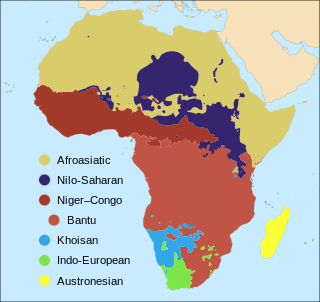
The number of languages natively spoken in Africa is variously estimated at between 1,250 and 2,100, and by some counts at over 3,000. Nigeria alone has over 500 languages, one of the greatest concentrations of linguistic diversity in the world. The languages of Africa belong to many distinct language families, among which the largest are:

East Africa, also known as Eastern Africa or the East of Africa, is a region at the eastern edge of the African continent, distinguished by its geographical, historical, and cultural landscape. Defined in varying scopes, the region is recognized in the United Nations Statistics Division scheme as encompassing 18 sovereign states and 4 territories. It includes the Horn of Africa to the North and Southeastern Africa to the south.

The Luo are several ethnically and linguistically related Nilotic ethnic groups that inhabit an area ranging from Egypt and Sudan to South Sudan and Ethiopia, through Northern Uganda and eastern Congo (DRC), into western Kenya, and the Mara Region of Tanzania. Their Luo languages belong to the western branch of the Nilotic language family.

African Jewish communities include:

Ugali, also known as posho, nsima, papa, pap, sadza, isitshwala, akume, amawe, ewokple, akple, and other names, is a type of corn meal made from maize or corn flour in several African countries: Kenya, Uganda, Tanzania, Zimbabwe, Zambia, Lesotho, Eswatini, Angola, Mozambique, Namibia, Democratic Republic of the Congo, Malawi, Botswana and South Africa, and in West Africa by the Ewes of Togo, Ghana, Benin, Nigeria and Cote D'Ivoire. It is cooked in boiling water or milk until it reaches a stiff or firm dough-like consistency. In 2017, the dish was added to the UNESCO Representative List of the Intangible Cultural Heritage of Humanity, one of a few foods in the list.
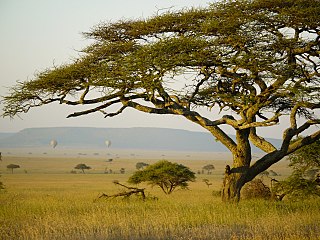
Mara Region is one of Tanzania's 31 administrative regions. The region covers an area of 21,760 km2 (8,400 sq mi). The region is comparable in size to the combined land area of the nation state of El Salvador. The neighboring regions are Mwanza Region and Simiyu Region, Arusha Region, and Kagera Region. The Mara Region borders Kenya .The regional capital is the municipality of Musoma. Mara Region is known for being the home of Serengeti National Park, a UNESCO World Heritage site and also the birth place of Tanzania's founding father Julius Nyerere. Under British colonial occupation, the Mara Region was a district called the Lake Province, which became the Lake Region after independence in 1961.

Musoma is a city in the east shore of Lake Victoria of Tanzania. It is the capital of Mara Region, one of the administrative Regions of Tanzania. It also serves as the administrative centre of Musoma Rural District and Musoma Urban District.
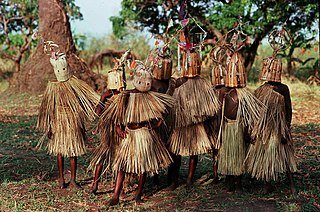
The Yao people are a major Bantu ethnic and linguistic group living at the southern end of Lake Malawi. They played an important role in the history of Southeast Africa, notably in the 19th century. The Yao are a predominantly Muslim-faith group of about two million, whose homelands encompass the countries of Malawi, the north of Mozambique, and the Ruvuma and Mtwara Regions of Tanzania. The Yao have a strong cultural identity, transcending national borders.

Karagwe is one of the eight districts of the Kagera Region of Tanzania. It is bordered to the north by Uganda, to the east by the Bukoba Rural District, to the southeast by the Muleba District, to the south by the Ngara District and to the west by Republic of Rwanda, from which it is separated by the River Kagera. Small lakes such as the Ikimba, Burigi, Rushwa, and Rwakajunju provide fishing opportunities for residents of the Karagwe District. The district covers and area of 5,134 square kilometres (1,982 sq mi).
The Hororo or Bahororo are a Bantu-speaking ethnicity mainly residing in the north of the former Kigezi District in southwestern Uganda. In 1905, they were described by a British officer as a "quiet, inoffensive people" who owned cattle. They are made up mostly of the Hima ethnic group and the Bantu ethnic group. They reside mainly in Rujumbura in southwestern Uganda and are related to the Banyankole, Banyoro, Batooro, Songora and Tutsi peoples respectively. Rujumbura was ruled by the BeeneKirenzi sub-clan with Omukama Karegyesa as their last king. The Bahororo speak a dialect of Nkore-Kiga, Ruhororo. They are subdivided into clans that are similar to those of the kingdom of Ankole. Unlike Ankole, which was ruled by the Hinda clan, Mpororo was led by the Bashambo clan.
The Nyambo, or Ragwe, are a Bantu ethnic and linguistic group based in the Karagwe and Kyerwa Districts of Kagera Region in far northwestern Tanzania. The Nyambo population is estimated to number 670,000. Their boardering tribes are the Haya and Hangaza in Tanzania, Nyankole in Uganda and Rwanda with some similarities in their languages and a lot of differencies.

The Kuria people (also known as the AbaKurya, are a Bantu community in Tarime District of Mara Region in Tanzania and southern Kenya. Their homeland is bounded on the east by the Migori River and on the west by the Mara River estuary. Traditionally a pastoral and farming community, the Kuria grow maize, beans and cassava as food crops and coffee and maize as cash crops.
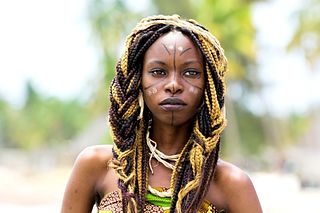
The Haya are a Bantu ethnic group based in Kagera Region, northwestern Tanzania, on the western side of Lake Victoria. With over one million people, it is estimated that Haya make up approximately 4% of the population of Tanzania. Historically, the Haya have had a complex kingship-based political system. Agriculture, particularly banana farming, is central to Haya economic life. They are credited with the independent development of carbon steel dating to 2000 years ago using pre-heating techniques.
The Alagwa are a Cushitic ethnic group mostly based in the Kondoa District of the Dodoma Region in central Tanzania, an area well known for rock art. Smaller numbers of Alagwa reside in the Hanang district of the Manyara Region in Tanzania, as well. They speak the Alagwa language as a mother tongue, which belongs to the South Cushitic branch of the Afro-Asiatic family. In 2022, the Alagwa population was estimated to number 52,816 individuals, and Mous (2016) estimates the number of speakers to be slightly over 10,000.
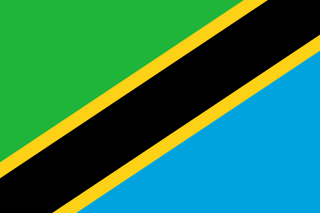
The following outline is provided as an overview of and topical guide to Tanzania:
The Great Lakes Bantu languages, also known as Lacustrine Bantu and Bantu zone J, are a group of Bantu languages of East Africa. They were recognized as a group by the Tervuren team, who posited them as an additional zone to Guthrie's largely geographic classification of Bantu.

The Bafumbira, are a Bantu ethnic group from Kisoro District in South Western Uganda. They are of three indigenous groups: Bahutu, Batutsi and Batwa.
Karagwe Kingdom was a historical Bantu state in present-day Karagwe District of Kagera Region in northwestern Tanzania, between Rwanda and Lake Victoria. East Africa's influential Karagwe Kingdom was ruled by a hereditary monarchs whom were reputed to be Bachwezi descendants. By the end of the 20th century, it had thriving trade with traders from all parts of East Africa, especially slave trading Arabs. Bweranyange served as the Karagwe kingdom's capital.
The Bazigaba or Zigaba clan is a large multi-tribal clan of the great Banyakitara people in the African Great Lakes region. One who belongs to this clan is called Omuzigaba/ Muzigaba/Umuzigaba and the plural is Abazigaba. Because of their prior nomadic pastoralist nature, they are commonly found among the Banyarwanda Bakiga, Barundi Banyankore, Banyambo, Bahaya, Batagwenda, Banyaruguru,Banyamulenge and to some extent among the Bakooki and Basongora tribes to this present day. They are found in various places, including Nduga, Gisaka, Bwisha, Ndorwa, Mubari, Bufumbira, Rukiga and many other places chiefly in southwestern Uganda, Rwanda and northwest Tanzania.
I'm jita indeed but on our clan we don't have Rusori clan, Rusoli is the name of place. On the issue of clan , we are more than eight clans among of them are bhajigabha, bharungu, bhakwabhi, bhatata, bhaanga, bhalibwa, bhajigabha, bhegamba, bhalinga . All of our clan traditionally we c differ in some culture and believe. Example bhajigabha does eat meat but they can't eat ileum(meat inside of the stomach) while other clans eat.